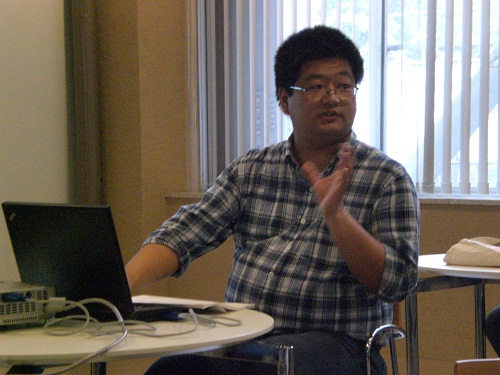“The Chosŏn Model” and the Reconstruction of “the Heavenly Dynasty” of the Qing, 1637—1761
下記の要領で第49回セミナーを開催いたしますので、ご案内いたします。
参加申し込みは必要ありませんので、奮ってご参加下さい。
The 49th seminar will be held as follows.
This seminar is open to the public without registration.
このセミナーは終了しました。以下の開催レポートをご覧下さい。
日時/Date:2012年5月17日(木)17:00-18:00
会場/Venue:東京大学東洋文化研究所1階 ロビー
Lobby, 1st Floor, Institute for Advanced Studies on Asia, University of Tokyo
http://www.ioc.u-tokyo.ac.jp/access/index.html
報告者/Presenter:Yuanchong WANG/ 王 元崇
(PhD Candidate, History Department of Cornell University, yw264[at]cornell.edu)
タイトル/Title:“The Chosŏn Model” and the Reconstruction of “the Heavenly Dynasty” of the Qing, 1637—1761
報告要旨/Abstract
This presentation examines how the Qing utilized “the Chosŏn Model” to construct a new Chinese empire and a new China-centric Zongfan system from the late 1630s to the early 1760s. “The Chosŏn Model” refers to a pattern that a country may follow Chosŏn into the Qing-centric Zongfan (a.k.a. tributary) system by receiving the imperial investitures from the Qing, adopting the reign title of the Qing to count dates, sending tributary emissaries to the Qing, and so forth. The Qing established the Zongfan relationship with Chosŏn in 1637. Through the seven-year-long practice of the Zongfan formalities from 1637 to 1643, the Qing eliminated its former identity as “barbarians” and cultivated the new political identity as “Zhongguo” (the Central Kingdom) in highly hierarchical contacts with Confucianesque Chosŏn against the background of “the Civilized–Barbarian challenge” in the Chinese world. After 1644 when the Manchus crossed the Great Wall to conquer the Ming’s territory, the Qing purposely converted Chosŏn into a prototypical fan (a.k.a. vassal country) and maximized its ritual role to an unprecedented degree to serve the reconstruction of the Qing China-centric Zongfan system. When this system reached its height in the second half of the eighteenth century, which could be marked by the completion of the Qing’s imperial collection Illustrations of Subordinate Peoples of the Imperial Qing in 1761, the Qing presented itself as “Zhongguo” and “the Heavenly Dynasty,” while Chosŏn served as a “barbarian” country on the Qing’s periphery.
お問合せ先:日本・アジアに関する教育研究ネットワーク(ASNET)
電話:03-5841-5868
e-mail: asnet[at]asnet.u-tokyo.ac.jp
———————-

Yuanchong Wang (PhD candidate, History Department, Cornell University) gave a talk at ASNET’s Presentation #49 as scheduled. As a part of his doctoral dissertation that aims to examine the rise of China’s modern diplomacy by exploring the case of the Sino—Korean Zongfan relationship, his presentation particularly discussed how the Manchu regime—the Qing since 1636—utilized its Zongfan relationship with Chosŏn to cultivate its new identity as “the Central Kingdom” before 1644 and to reconstruct a new“Heavenly Dynasty”of the Qing in the post-1644 period against the Chinese cultural background of “Civilized—Barbarian challenge.”He argued that“the Chosŏn Model” (Ch. chaoxian shili) was not only applied by the Manchu regime to Ryukyu, Annam, Siam, Burma, and other countries as people have usually understood, but also to those political units in Inner Asia. He suggested that the Qing institutionally barbarianized all countries it knew by publishing the imperial collection entitled “Illustrations of Subordinate Peoples of the Imperial Qing” in 1761. In the collection, all countries such as Chosŏn, Ryukyu, Annam, Burma, Sulu, Siam, Holland, Britain, France, Japan, and so forth, were described as countries of“foreign barbarians” (Ch. waiyi) presented by Chosŏn that appeared on the first page of the collection. The presentation also briefly discussed what happened to the Qing China and its foreign diplomacy in the nineteenth century after the Qing institutionally barbarianized all these countries. It suggested that the Qing China’s modern diplomacy rose from the fall of the Zongfan system, particular from the termination of its Zongfan relationship with its prototypical fan—Chosŏn Korea.[Yuanchong WANG]

